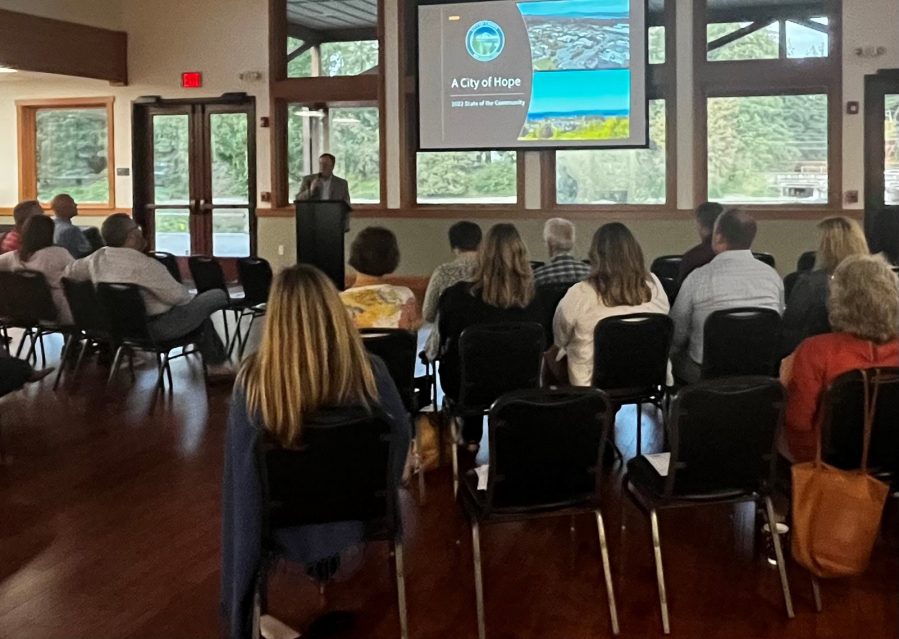Camas is a city of hope. That’s the message Camas Mayor Steve Hogan delivered during his address for the 2022 State of the Community, held Thursday, Sept. 15, at Lacamas Lake Lodge.
“The city of Camas commits to preserving its heritage, sustaining and enhancing a high quality of life and developing the community to meet the challenges of the future,” Hogan told the crowd of about 50 people who had gathered at the city’s lakeside lodge to hear Hogan, as well as Camas School District Superintendent John Anzalone and Port of Camas-Washougal Executive Director David Ripp speak about Camas’ present and future.
“We want to talk about all of the great things that are happening, because, if we don’t tell our story, guess what? Somebody else will,” Anzalone said. “We want to celebrate the wonderful things our kids and staff are doing.”
Between Anzalone, Hogan and Ripp, community members who turned out for the annual, in-person State of the Community event received updates on ongoing projects such as the city’s lake management plan, which involves partnerships between the city and Clark County, the Washington State Department of Ecology and several other regional and statewide entities.
“A couple years ago, we said, ‘We need to step up and take action before we get too far down the road,'” Hogan said, referring to the ongoing water quality issues and toxic algal blooms in Lacamas, Round and Fallen Leaf lakes. “(Former) Mayor (Barry) McDonnell and our public works director, Steve Wall, said, ‘Time out. Let’s do this right.’ So we have basically worked not only as a city but with the county and Ecology … and we are now at the end of the second year of a 3-year plan.”




